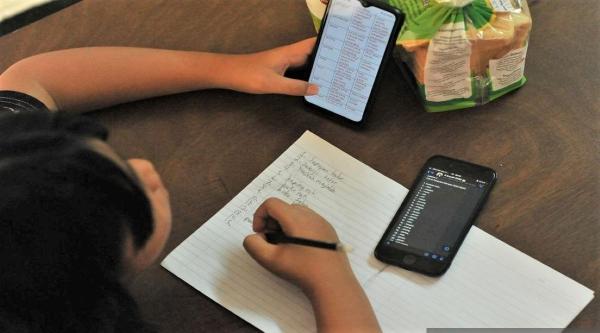PUTRAJAYA, Sept 21 — The Department of Statistics (DOSM) released a report by MyCensus 2020: Population Well-Being (Social Relations) today, claiming that 11.8 million people in Malaysia aged 15 and over use mobile data as a mode of accessibility to the Internet.
The seven means of Internet access listed in MyCensus 2020 are home, workplace, another person's home, facilities with free Internet access, community facilities with Internet, education centres, and mobile data.
Chief Statistician Datuk Seri Mohd Uzir Mahidin said the findings indicated that home Internet access is the second most preferred among Malaysians with a total of 5.3 million users, followed by workplace (2.6 million persons), free Internet access facilities (800,000 persons), educational centres (700,000 persons), other people's homes (500,000 persons), and community Internet access facilities (400,000 persons).
"Males were primarily the main users of Internet access by mobile data (6.1 million persons), facilities with free Internet access (400,000 persons), another person’s home (300,000 persons) and community facilities with Internet access (200,000 persons).
"Meanwhile, females were higher than males in the home Internet access (2.7 million persons) and education centre (400,000 persons)," he said.
MyCensus 2020: Population Well-Being (Social Relations) is the second volume of the Population Well-Being publication series after Fitness, which was released last June.
This publication features statistics on the population aged 15 years and above in four segments namely social media account users; access to the Internet; eating together within a week; and face-to-face interaction with neighbours within a month.
The findings are purely based on responses from respondents. Respondents can choose multiple answers for all segments except for interaction with neighbours that allow only one answer.
Mohd Uzir said the findings indicated that among the six social media platforms, namely Facebook, WhatsApp, Instagram, X (formerly known as Twitter), LinkedIn, and Telegram. WhatsApp has the highest number of social media users with 86.5 per cent or 13.8 million persons from 16 million persons that responded in this survey.
The reported number of users is based on the number of population, irrespective of the presence of multiple social media accounts held by individuals.
He said 12.3 million persons are reported to be using Facebook, followed by Instagram (6.3 million persons), Telegram (3.7 million persons), X (formerly known as Twitter) (1.9 million persons), LinkedIn (800,000 persons), and others (200,000 persons).
Under the Eating Together segment, he said a total of 13.3 million population responded, and it refers to the number of population aged 15 years and over that eat together as a family or with household members in a week during mealtime breakfast, coffee break, lunch, hi-tea, dinner, and supper.
Of 13.3 million respondents, 81.9 per cent or 10.9 million respondents ate together during dinner, while two-thirds or 73.4 per cent had breakfast and 67.4 per cent had lunch together.
Mohd Uzir said a lower percentage of respondents eat together during hi-tea (19.4 per cent), coffee break (15.3 per cent) and supper (5.9 per cent).
"In terms of frequency, more than 50 per cent of respondents eat together five to seven times a week during breakfast (60.3 per cent), lunch (57.1 per cent) and dinner (75.9 per cent).
"In general, more females eat together during dinner (5.5 million persons), breakfast (4.9 million persons), lunch (4.6 million persons), coffee break (1.1 million persons) and hi-tea (1.4 million persons). On the other hand, more males eat together during supper (398,234 persons)," he said.
On another note, the Chief Statistician said a total of 13.8 million out of 14.8 million respondents engaged in face-to-face interaction with neighbours in a month, while 958,808 persons never had any face-to-face interaction.
People in Malaysia have greater neighbourliness as two-fifths or 41.4 per cent engaged in face-to-face interaction with neighbours daily, 41.5 per cent at least once a week and 10.6 per cent at least once a month.
"Nevertheless, 6.5 per cent or 960,000 of 13.8 million respondents admitted that they never interacted with neighbours in a month.
"Population aged 15 to 64 years interact with neighbours the most at least once a week (41.9 per cent), while those aged 65 years and over exchanged greetings largely daily (46.7 per cent)," he said.
Mohd Uzir said Bumiputera interact with neighbours mainly daily (47.7 per cent), while Chinese (44.4 per cent) and Indians (45.9 per cent) mainly at least once a week.
— Bernama




